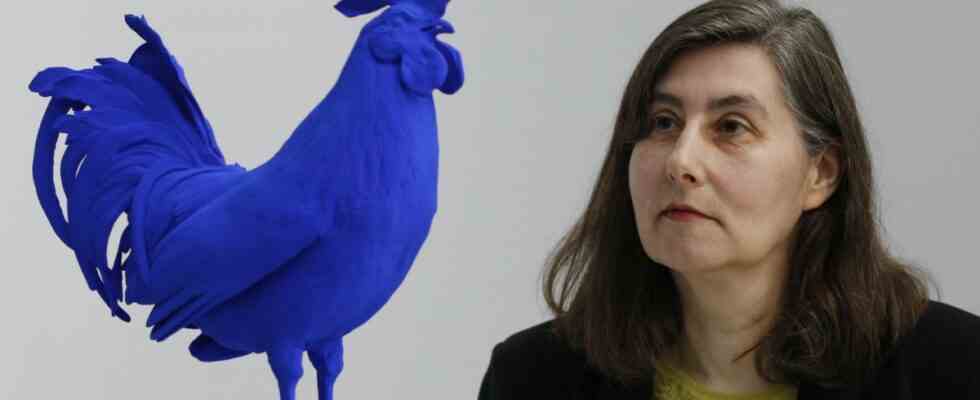The Venice Biennale, which opens in April, has already awarded two artists a Golden Lion for their life’s work: Cecilia Vicuña and Katharina Fritsch. While the Chilean sculptor, painter and installation artist Cecilia Vicuña has only become internationally known in recent years, Katharina Fritsch, who was born in Essen in 1956, has long been considered one of the most important sculptors in the scene. In Germany, people tend to overlook the fact that Katharina Fritsch, who has lived and worked there since studying at the Düsseldorf Art Academy, is celebrated internationally: people prefer to look to Berlin, to focus on young artists, new media or political content.
The work of Katharina Fritsch, who decided to become an artist at the age of five, is both spectacular and impressively calm. She became known through participation in important exhibitions such as “From here – two months of new German art in Düsseldorf” in 1984 or the sculpture projects in Münster. As early as 1987 she exhibited a life-size green elephant in the Kaiser Wilhelm Museum in Krefeld. Her most famous work is certainly the spooky, sombre, all-dimensional bursting “Rat King” (1993), a sculpture of 16 rats arranged in a circle, almost three meters high, whose tails – true to the literary myth – are knotted in the middle. The gigantic, true-to-life sculptures are mostly made of plastic and their symbolic coloring doesn’t really look realistic, more as if they were taken from illustrations, fairy tale books or a toy zoo. “For me, everything can be a sculpture,” says Fritsch. “I’ve always wanted to create a kind of parallel world that is surprising because the viewer has the feeling that they are seeing the objects for the first time.”
Horror scenario: curator Harald Szeemann reserved an entire room for Katharina Fritsch’s “Rat King” at the 48th edition of the Venice Biennale.
(Photo: dpa)
Katharina Fritsch’s life-size figures such as “Monk”, “Doctor” or the bright yellow Madonna figure were discussed early on in America, between Los Angeles and New York, where Fritsch was one of the first German artists to be shown by important galleries. The New York Museum of Modern Art permanently installed her sculptures in the garden. In 2001, Fritsch represented Germany at the Venice Biennale and was given a retrospective by the Tate in London. The monumental blue “Hahn/Cock” that Fritsch installed in 2013 on the pedestal reserved for contemporary art in London’s Trafalgar Square once again underlined the current importance of this artist. Cecilia Alemani, the art curator of the current Venice Biennale, called Fritsch’s contribution to contemporary art and in particular to sculpture “incomparable”.

